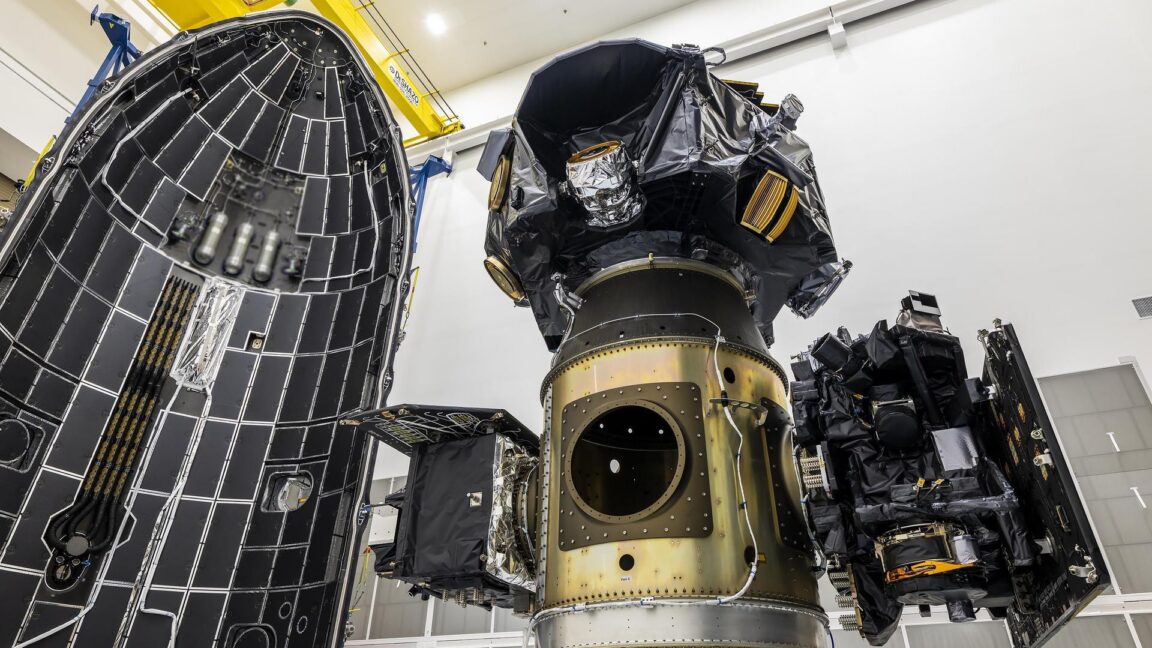
"One of the missions, from the National Oceanic and Atmospheric Administration (NOAA), will beam back real-time observations of the solar wind to provide advance warning of geomagnetic storms that could affect power grids, radio communications, GPS navigation, air travel, and satellite operations. The other two missions come from NASA, with research objectives that include studying the boundary between the Solar System and interstellar space and observing the rarely seen outermost layer of our own planet's atmosphere."
"All three spacecraft were mounted to the top of a Falcon 9 rocket for liftoff at 7:30 am EDT (11:30 UTC) on Wednesday from NASA's Kennedy Space Center in Florida. The rocket arced on a trajectory heading east from Florida's Space Coast, shed its reusable first stage booster for a landing offshore, then fired its upper stage engine twice to propel the trio of missions into deep space."
Three missions launched atop a SpaceX Falcon 9 toward an orbit nearly a million miles from Earth to measure the supersonic stream of charged particles from the Sun. One mission from the National Oceanic and Atmospheric Administration will relay real-time solar wind observations to provide advance warning of geomagnetic storms that can disrupt power grids, communications, GPS, air travel, and satellites. Two NASA missions will study the boundary between the Solar System and interstellar space and observe the rarely seen outermost layer of Earth's atmosphere. The rocket shed its reusable first stage and placed the spacecraft on a trajectory to halo orbits around the Sun–Earth L1 Lagrange point. The primary spacecraft, IMAP, is a spin-stabilized, donut-shaped probe about 8 feet in diameter carrying 10 science instruments.
Read at Ars Technica
Unable to calculate read time
Collection
[
|
...
]